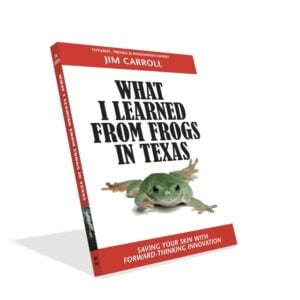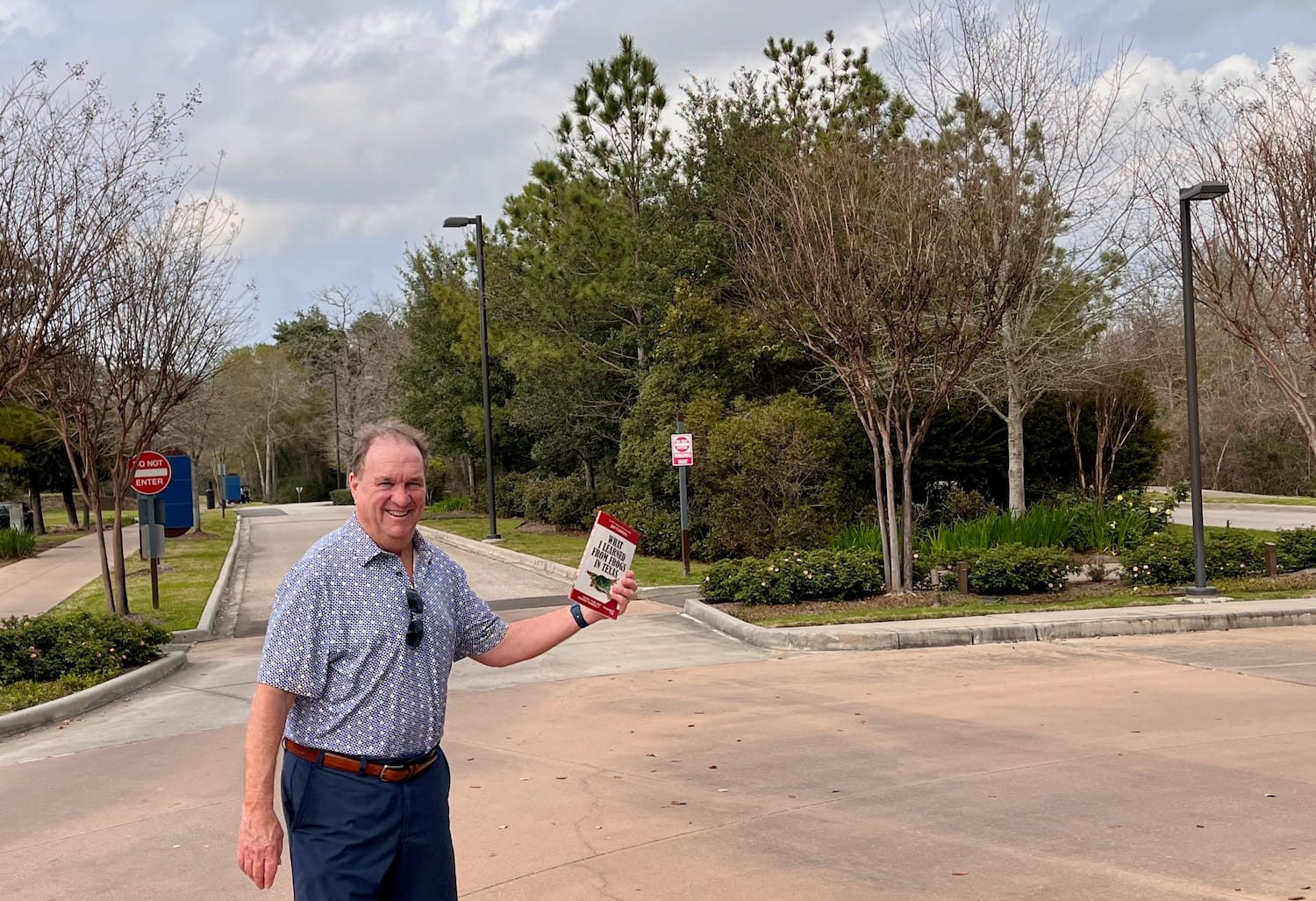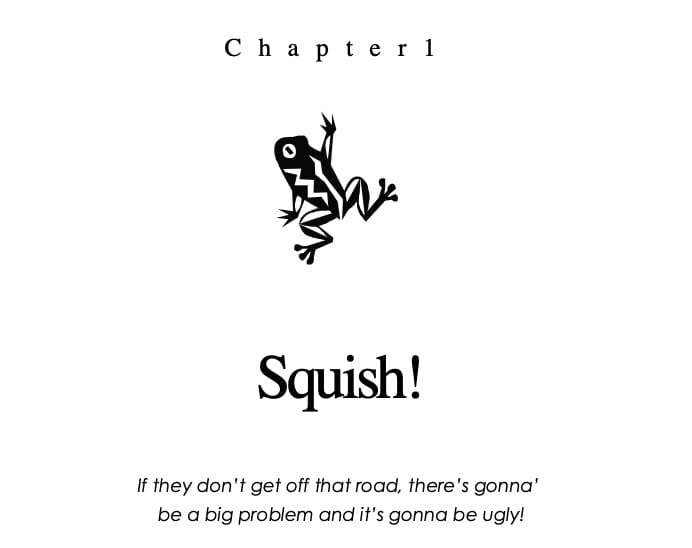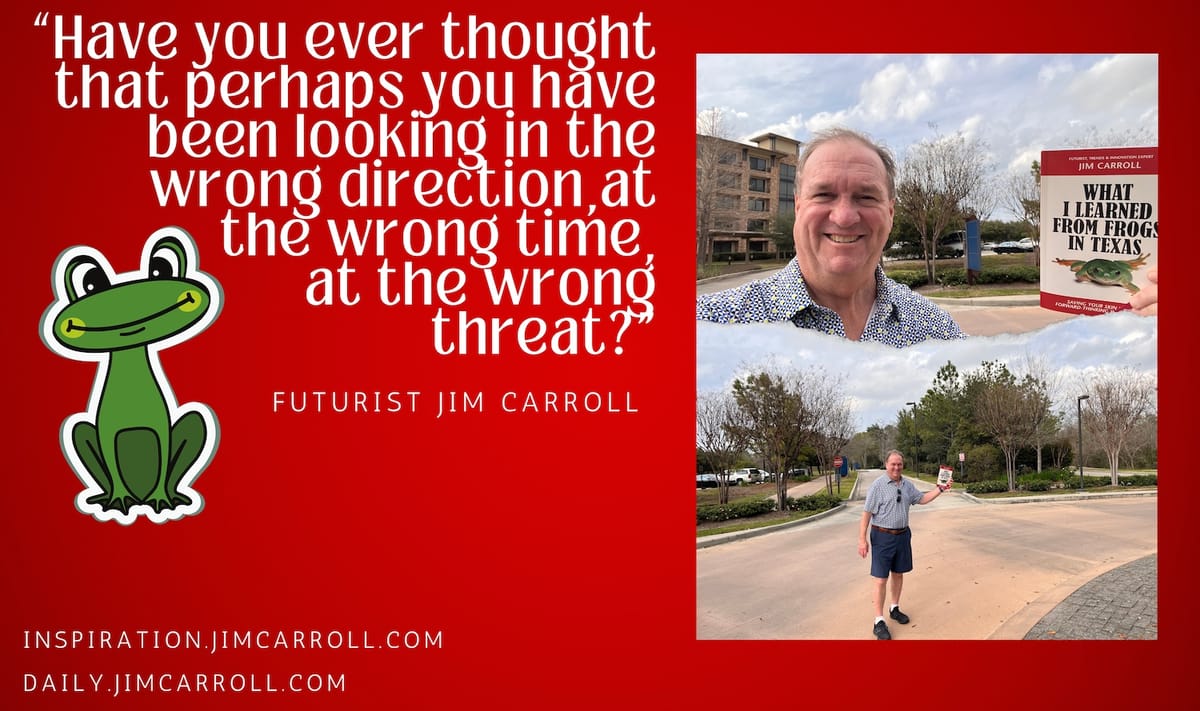“Have you ever thought that perhaps you have been looking in the wrong direction, at the wrong time, at the wrong threat?” — Futurist Jim Carroll
It’s book week! Each day, a post involving one of my books! That’s because there are TWO big milestones this week. The first one involves todays’ story.
The story that unfolds today involves my 2004 book, “What I Learned from Frogs in Texas,” and it’s pretty exciting — at least for me. That’s because today I am in the exact location where this business parable involving the frogs unfolded — The Woodlands Resort in Houston!

It’s kind of exciting because this particular book was the culmination of a pretty massive transformation in my career and focus that occurred from about 2000 to the time of the publication of the book in 2004.
The backstory — during the 90s, I was the Internet guy — I wrote and co-wrote 34 books about the Internet, selling well over a million books. I was on stage — mostly throughout Canada — advising organizations and associations about the business, societal, and political impact of the network. Yet, I saw the ‘topic’ coming to an end, particularly as the era of dot.com companies collapsed and people started to move on from the Internet to bigger future issues. I decided that since I was already quite focused on the future, trends, creativity, and innovation, I would become a ‘futurist,’ and began to skew my business and brand to that area of insight.
It took a lot of work and had me speaking at a lot of small events and conferences as I worked to build name recognition and my brand, particularly as I began to focus on the US market. But to pull it off, I needed some more credibility in this field — particularly the credibility that would come from having a new book. The result was What I Learned from Frogs in Texas — Saving Your Skin with Forward Thinking Innovation. It’s a book that focuses on the future, trends, and innovation!
As to what happens to the frogs on the road in Texas? I‘ll let the story unfold as I share the opening chapter below — the story speaks for itself. Suffice it to say, the initiative worked — Frogs gave me an opening, a brand, and credibility. I never looked back as I built myself into a significant presence on the US and international speaking circuit, a degree of success that lasts to this day.
Don’t ever let anyone ever tell you that you can’t reinvent!
And don’t ever stop looking in the wrong direction for the future — the Frogs did, and it did not end well!
And so for me today, it’s a bit of a thrill to be standing in the same spot some 21 years later where the story unfolded.

As for the story? You can read the opening chapter here, and also below. And, even though it doesn’t really sell anymore, it’s still available on Amazon.
I’m pretty proud of the book!
My advice? Don’t be like the frogs on the road in Texas!

Chapter1
Squish!
If they don’t get off that road, there’s gonna’ be a big problem and it’s gonna be ugly!
They get squished, you know — the Texan frogs.
It’s important to get that issue out of the way, so I can put the most important theme of this book into perspective: it isn’t the fact that the frogs get crushed, it’s the reasons why.
FROGS IN THE CULVERT
I have been using the story of the frogs in Texas for quite some time to outline why I believe so many seem to be failing when it comes to dealing with the future.
How did the story come about? I was speaking at a conference held at a large, upscale resort in Houston early one autumn. It was a hot, humid, sticky day, typical of the weather at that time of year. As I walked from the conference center to the hotel room (which, being in Texas where “everything is bigger,” was quite a hike), I noticed them sitting on the road, in a slight puddle of water. Little green frogs, cute as a button.
In but a moment, they jumped into the culvert at the side of the road. What happened? Some gulls flew in, and conscious of the impending threat, the frogs reacted appropriately.
In a little while, the frogs darted back onto the road. Their goal was to get into the puddle — the hotel sprinkler system was on, and some of the runoff was making its way onto the road. Once there, the frogs spent their time enjoying the water before their natural instinct once again took over: when they spotted a gull in the distance, they jumped right back into the culvert.
In Japan, frogs are considered symbols of good luck.
But they were determined to enjoy their little pond! As soon as they were back in the darkened culvert, you could see their little green eyes looking out, watching carefully. Whenever the gulls left, the frogs jumped out, only to repeat their retreat moments later as yet another avian adversary flew in. This small bit of inconsequential theater occurred throughout the day as I went back and forth from my hotel room to the conference center.
Earlier that morning I had provided the opening keynote for a conference, and had spoken quite forcefully about the fact that many organizations need to start thinking again about the future. I had suggested to the audience that we should take the time to understand the important trends that might affect us through the next five, ten or fifteen years. From that, we can then carefully determine what we might do to respond to some fairly unique challenges, issues and threats set to emerge. It’s an important message, and is one that I am often called upon to deliver. The frogs in Texas soon provided me with a unique method of getting that message across.
I had great fun watching these little frogs — until 4 PM when the conference drew to a close.
SHORT-TERM THREATS
I was once again making my way back to my hotel room, and there were my little green friends, sitting in the road, focused on the seagulls. They didn’t notice that the conference had come to an end, and that several hundred cars were starting to leave the parking lot. Their demise was dramatically ugly but painfully brief. That’s probably a good thing, because they certainly had no idea what was coming. While they were out on the road cavorting around in the puddles and dodging the gulls, they didn’t notice the sudden increase in traffic coming from the other direction.
DefinitionRanidaphobia: The fear of frogs
This made me think — the frogs were so busy focusing on the short- term threats and problems, they seemed to give precious little thought to some of the longer-term threats that might present them with even greater challenges.
That’s when I clued in to the fact that these frogs in Texas had established a pattern of behavior similar to that of many people in the world today.
FRAME OF MIND
The fact that the frogs were instantly squished into little green bits of nothingness seems tragic, yet what is even more tragic is that they could have seen it coming if only they had taken the time to look beyond “right now.” That simple reality seems to match the circumstances of quite a few people in the world today. I see far too many people who are like the frogs on the road in Texas: unaware of the changes occurring around them. They may be extremely focused, but they are looking at the wrong threat, in the wrong direction, at the wrong time.
We need to change our frame of mind with respect to the changes occurring in the world around us, and the trends that will present challenge and opportunity. I believe the pace of change in our world is going to increase, and will be relentless and unforgiving.
I’m convinced that everything we know — the jobs and professions in which we have been trained, the marketplace in which we sell our products, the industries in which we work, and the knowledge we are expected to have mastered — will be extremely different tomorrow compared to where we are today.
Science Fiction??The rate of change is so fast that many science fiction authors argue whether there can be anything such as science fiction.
Indeed, I’m a big believer that we are now living in a period of time involving the fastest rate of change ever to have occurred, and that rate of change is speeding up. To survive and thrive, we must learn how to anticipate these changes, understand how they might impact us, and learn what we need to do to turn these challenges into opportunities.
I believe this is a critical capability, and it is the focus of this book.
Learning to deal with a world of relentless change can prove to be very difficult and challenging, yet it is also something that can be done. People need to start thinking again about the future. Not a future that comes in the next few weeks or the next few months, or even what might come next year. Instead, people need to start thinking long-term — a type of thinking that seems to have come to an end in the last few years.
Otherwise, they’ll find they are not unlike those frogs on the road in Texas.
Futurist Jim Carroll will be using the story of the frogs in Texas in his keynote in Texas later this morning — it works pretty effectively as a business parable!

